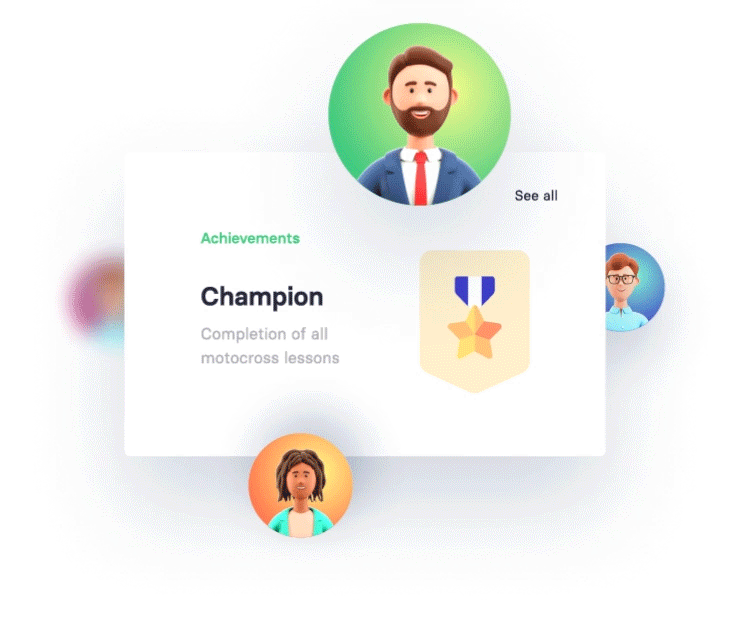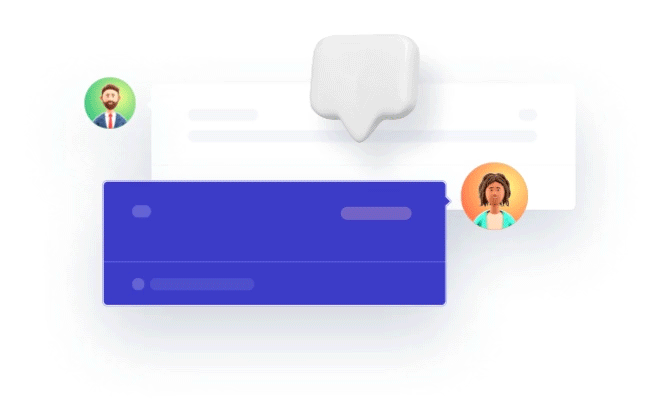5 Tips Animated Gifs for eLearning Courses
5 Tips For Making Effective Animated Gifs for eLearning Courses
Animated gifs in eLearning courses can be a great way to reinforce important concepts, grab learners’ attention and increase engagement.
In fact, research has found that using visual media like animated images or videos can improve how well learners understand the material.
But this is only true if users of your course know how to make effective animated gifs for eLearning.
In this blog post, we’ll outline some key considerations when creating animated gifs for your eLearning course as well as six tips you can use to create effective animations more efficiently and effectively.
What makes a good gif for eLearning?
The first thing you need to think about is what makes a good gif for eLearning. Here are some of the key elements that you need to consider when creating gifs for your eLearning course.
Audience: Knowing the audience of your gif will help you to determine what information you want to include in your gif. For example, if you’re creating an image for learners who are in the workplace, you may include some work-related concepts in the gif so that learners can easily understand and draw parallels with their own lives.
Content: Next, you’ll want to think about the content you want to include in your gif. In fact, a great gif for eLearning can include anything from text to images and videos. A great gif for eLearning will include the information you want to convey and draw attention to this information by using colour, contrast, layout and other visual features to make it more engaging for learners.
Context: The context of your gif will also play a key role in its success. For example, if you’re creating a gif that targets a specific age group or educational level (e.g. college students), you may want to rethink the context of your gif.
Where to find gifs: There are many websites that offer free gifs for your use. You can also find gifs on websites that are aimed at gif users, such as Gfycat and Gifbin.
Animated Gif for eLearning
Be clear about your end goal before you start
Before you start creating your gif, you’ll want to be clear about the end goal of your gif. This can be as simple as being clear about what you want your gif to do.
For example, are you wanting your learners to understand a specific concept or are you wanting them to learn a new skill? If it’s the latter, you’ll need to be clear about what this skill is and how it will apply to their lives.
Another way to clarify your end goal is to think of a way you can visually represent your goal. This can help you to clarify what you want your gif to do and make it easier to visualize.
Know what information you want to include in your animated gif
Your next step is to think about what information you want to include in your gif.
While you may want to include all of the information in your eLearning course, you may not want to include it all in one gif.
This may be due to the fact that some of the information may be too long to include in one gif. One way to select what information you’d like to include in your gif is to write out a list of the key concepts you want to convey in your elearning course. This can help you to determine what you want to include in your gif.
You can also use visualization apps and software to help you create gifs.
Some of these apps include Canva, GIPHY and Sketch. If you’re creating gifs for your eLearning course, you may also want to think about which platforms you’d like to use.
Animated Gifs for eLearning Courses
Start with a sketch or prototype
When creating your gif, you may find that it’s a good idea to start with a sketch or prototype of the gif first.
This can help you to clarify what you want to include in your gif, what information you want to include and how you want to incorporate your gif into your eLearning course.
This can also help you to determine the best way to animate your gif when you’ve finalized your design.
You may also find that sketching out your gif first can help you to create a gif that has a higher engagement and engagement level for learners.
Include references in your eLearning project file
When creating your gif for elearning, you may also want to include references or links to your course in your gif.
This can help you to show learners the information you want them to have in your eLearning course and show them what your eLearning course covers.
This can also help you to show learners the information you want them to have in your course.
Add motion to make it more engaging for learners
If you’re hoping to make your gif more engaging for learners, you may find that adding motion to your gif can help you to draw more attention to the information you want to include.
Adding motion to your gif may be a good idea if you want to make your gif more engaging for learners and make them want to learn more about the information that you’re including in your gif.
Adding motion can help you to create GIFs that are more memorable and more engaging for learners.
Animated Gifs for eLearning Courses
Final thoughts: Animated Gifs for eLearning Courses
Animated gifs have a lot of potential as a way to reinforce key concepts and draw attention to important information in your eLearning course.
But, you’ll need to know what makes a good gif for eLearning and what information you want to include in your gif to make the most out of them.
Contact us for a Free Demo!
TheLearning LAB




